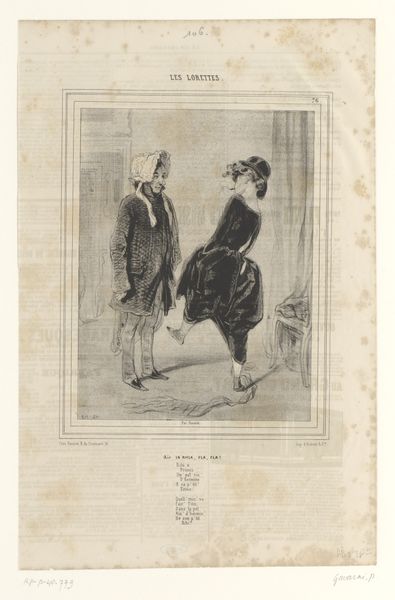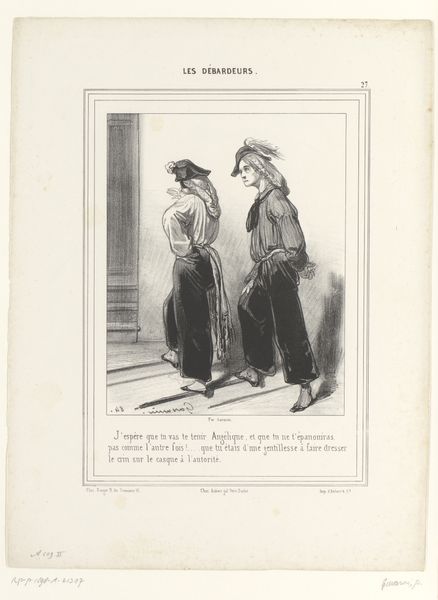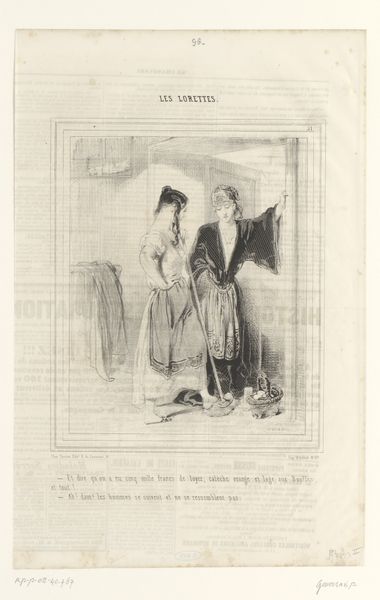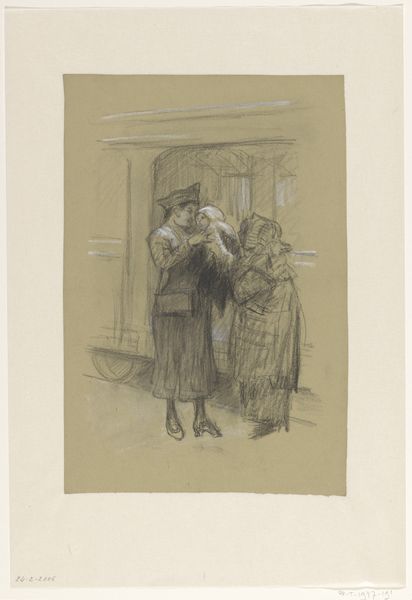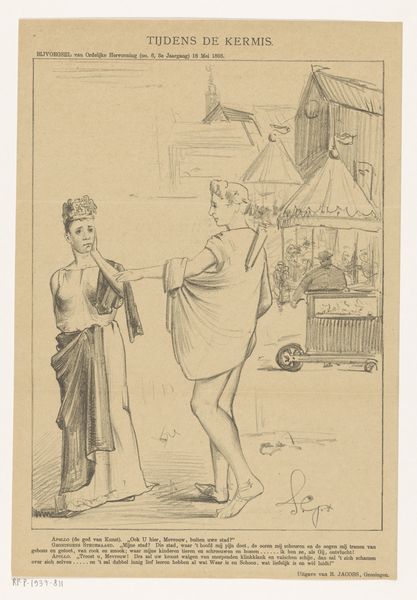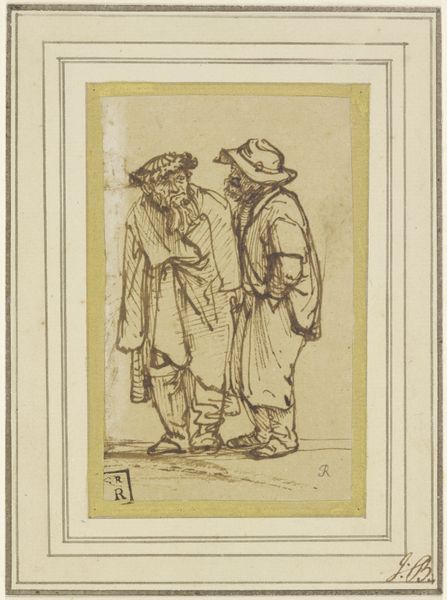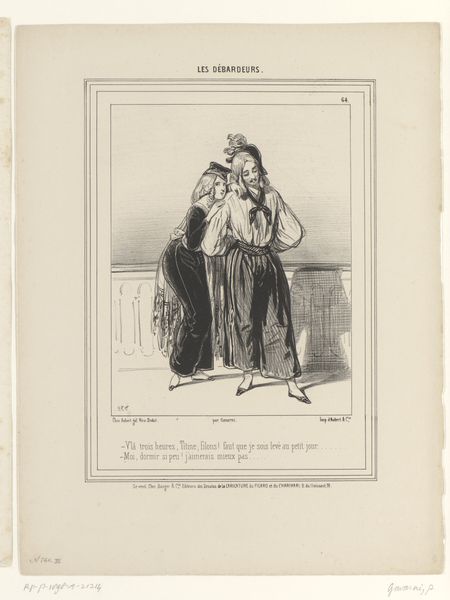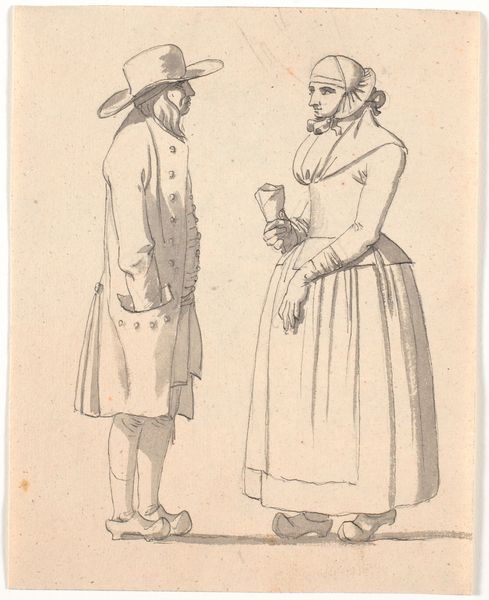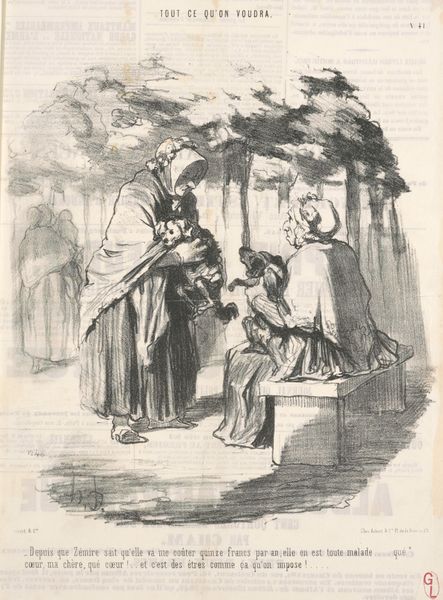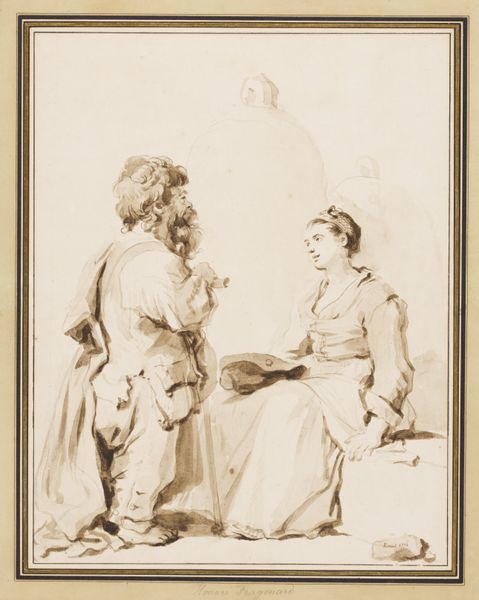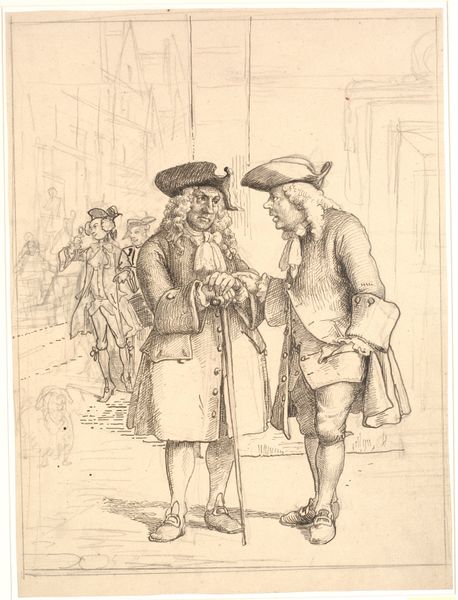
A Dutch Abbess and Her Nymphs Sketched at Amsterdam Possibly 1796
0:00
0:00
drawing, print, etching, paper
#
portrait
#
drawing
# print
#
etching
#
caricature
#
etching
#
paper
#
genre-painting
Dimensions: 300 × 250 mm
Copyright: Public Domain
Curator: Thomas Rowlandson, likely sketched around 1796, offers us "A Dutch Abbess and Her Nymphs Sketched at Amsterdam"—currently held at The Art Institute of Chicago. It's an etching on paper. Editor: It's…striking. The line work is so spare, but it still manages to convey a remarkable sense of bulk, especially in the abbess herself. There's a real contrast in the textures between the figures, though. Curator: Rowlandson was known for his caricatures, particularly of social life in the late 18th and early 19th centuries. This print pokes fun at religious figures and perhaps the hypocrisy perceived within the church at the time. Editor: The composition is clever too. The way the figures are arranged, almost in a receding line, draws the eye. The lack of shading throws everything into a single visual plane though—everyone is given similar importance. Curator: Yes, consider the social commentary; abbesses, in reality, would have been figures of considerable authority and responsibility, administering convents and upholding strict religious codes. Rowlandson here reduces the figure to a caricature of earthly pleasures. The “nymphs” behind suggest not a spiritual retinue but something far more dubious. And there is commentary regarding the perception and realities lived at Amsterdam. Editor: Right. There's something theatrical about it. It almost looks like a stage. I can see Rowlandson focused less on moral pronouncements and more on purely artistic goals like balancing shapes. But the setting definitely points elsewhere. Curator: True. It's always a balance of artistic expression and historical critique. We can see this play out. The businesses mentioned behind could possibly imply activities happening with the nymphs. What would these business be up to...? Editor: Food for thought! So in the end, a drawing about societal power structures with carefully rendered details and allusions—plus plenty to keep the historian occupied, as well. Curator: Precisely! Rowlandson offers much to both.
Comments
No comments
Be the first to comment and join the conversation on the ultimate creative platform.

